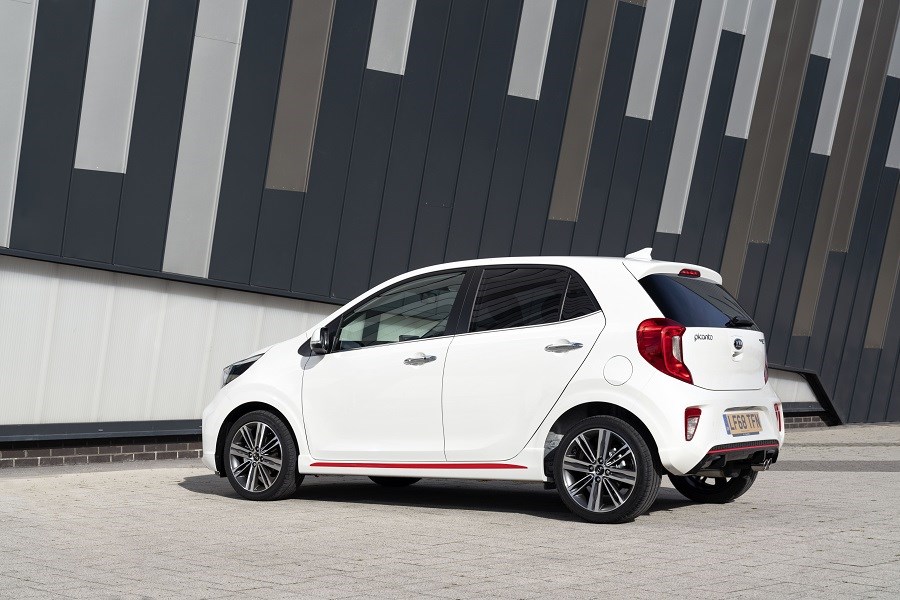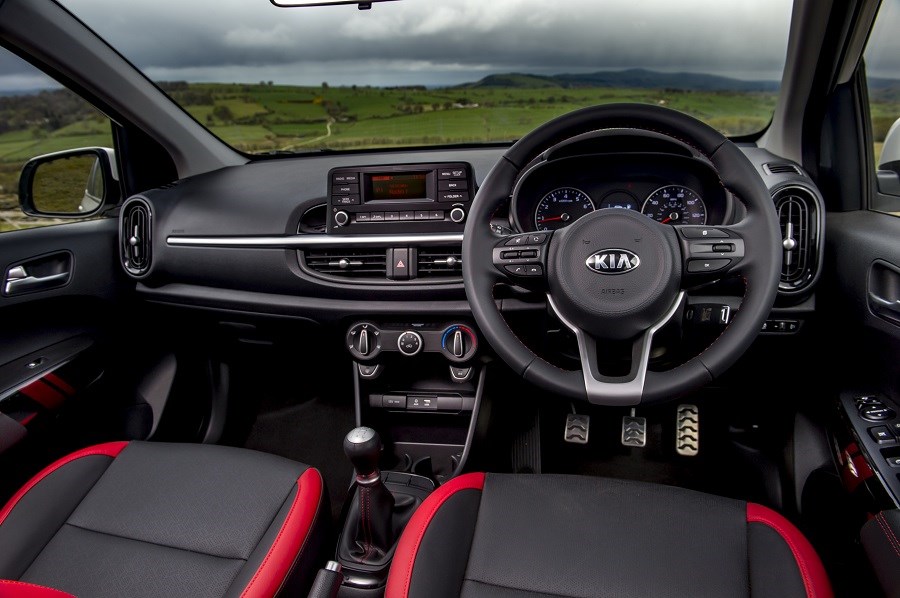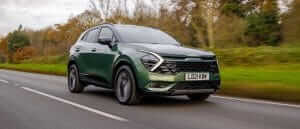Model review
The Picanto has been a staple favourite in Kia’s range since 2003, when the first-generation first went on sale. Affordable list prices and a surprising amount of practicality has long helped Kia sell its city car, while the seven-year warranty has undoubtedly been a big factor in drawing customers towards the model.
A second-generation model went on sale in 2011, with the third-generation car revealed in 2017.
A longer wheelbase led to the new model being far more practical, while a number of safety features were also added to the Picanto to help it remain a popular and safe choice.
Unveiled at the 2017 Geneva Motor Show, the Picanto was offered with Kia’s typical ‘floating’ seven-inch touchscreen with smartphone connectivity, as well as being a more style-led model, particularly when in GT-Line trim.
The new Picanto wasn’t a transformation for Kia, but built on the aspects which has made it successful particularly with value, spaciousness and standard equipment.
Latest model
Despite only being unveiled in 2017, Kia has already made a number of adjustments and additions to the Picanto.
The first change was the addition of the ‘X-Line’ trim model. This version was created in response to the hugely lucrative crossover market. While the Picanto isn’t a crossover, it adds SUV styling to the model to give it further appeal. Chunkier bumpers feature on the X-Line, with silver skidplates. Lime green detailing also appears on the X-Line, with these details appearing on the front grille and fog light surrounds, as well as on the interior. In typical crossover fashion, the X-Line also features plastic wheelarch cladding. A high-spec X-Line S model is also offered.
The second change was the introduction of a turbocharged 1.0-litre petrol unit to the line-up. This is a 99bhp engine — the same as available in the larger Rio supermini—and adds a fresh dose of character to the model. It’s certainly the pick of the engine range.
Value for money
The Picanto isn’t the bargain it once was in the city car market, although it’s a far more accomplished car now than it always used to be.
New Picanto prices start from £9,720, which doesn’t get you a great deal of equipment, although automatic lights, a trip computer and remote locking are included for the price which is more than what you would find on similarly-priced rivals. The ‘2’ specification is the best pick, with this model adding 14-inch alloys, air-conditioning, Bluetooth and a leather steering wheel and gearstick.
Early Picantos are priced from under £1,000, although the latest model costs from under £7,000, which is a good chunk off the list price. It’s not a model which depreciates too heavily though. Around £7,000 will get you a 2017 model in entry level ‘1’ trim, with around 10,000 miles on the clock. Add £500 to this if you would prefer a well-specced ‘2’ version. Nearly-new versions aren’t too much more, either.
Looks and image
The latest Picanto is certainly a better-looking model than the version it replaces, although entry-level trim levels can look rather uninspiring. The standard-fit daytime running lights and ‘tiger nose’ grille look stylish, although it’s not a model brimming with flair. GT-Line and X-Line versions are the best-looking models in the range, with 16-inch alloy wheels, LED daytime running lights and LED rear lights adding a bit of extra flair to the Picanto.
A lot of effort has been made by Kia to improve the quality of the cabin, and you can tell. The material quality is rather good for an affordable city car, with plenty of durable plastics dotted around the cabin. There’s not a lot of soft plastics and leather, but you shouldn’t forget that this isn’t intended to be a luxury model. The look of the interior has also improved, with not too many buttons and a ‘floating’ seven-inch touchscreen featuring on all but the ‘1’ and ‘2’ specs. Sadly, the lack of an infotainment system on these models makes the cabin look rather dated.
It might not look it, but the Picanto is a good car to drive. The light yet sharp steering almost gives the steering a ‘go-kart-feel’, which makes nipping about quite a lot of fun. It also handles well and grips to the road with limited body lean. The main downfall has always been the rather gutless petrol engines, although the addition of the new turbocharged petrol engine has transformed the model. Our only other gripe with the way it drives, is that the ride can be quite firm around town - although this is often a trait of city cars.
Space and practicality
The Picanto has always been a practical model in its class, and the latest version is no different.
A longer wheelbase on the new model (the overall length has stayed the same thanks to short overhangs) has allowed for further interior space. The biggest difference is rear legroom, with adults now being able to get comfortable in the back of the Picanto, but not with acres of room. The Picanto is a five-seater, but its narrow width means that you should really treat it as a strict four-seater if carrying adults. There’s a decent amount of headroom, too, while there’s plenty of storage spaces dotted around the cabin.
The Picanto’s boot is also quite vast for a model of this size. A 255-litre capacity isn’t huge, but it’s one of the most accommodating city cars out there, and is quite close to rivalling certain superminis in the class above. Folding the rear seats down increases the space on offer to 1,010 litres.
The Picanto scored a four-star safety record when it was tested by Euro NCAP in 2017 although this score only applies to Picantos fitted with autonomous driver aids. Vehicles without these systems scored an average three-star rating. Standard models get mandatory features such as hill start assist, as well as automatic lights, but it’s only the ‘3’, GT-Line and X-Line models that come with autonomous emergency braking.
Engines
The Picanto is offered with three petrol engines.
The entry-level choice is a naturally-aspirated 1.0-litre engine producing 66bhp. It’s quite a breathless unit, with a 0-60mph time of 13.8 seconds and is difficult to recommend unless it’s for a new driver or those who spend all their time driving around town. The next engine up is the popular 1.25-litre engine, which produces 83bhp. It’s a good all-rounder choice, but can feel rather out of its depth on national speed limit roads. This is offered with a five-speed manual or a four-speed automatic transmission, although we’d avoid the latter option unless you absolutely need it.
Our pick of the range is the new 99bhp turbocharged 1.0-litre petrol engine. It’s got an excellent amount of punch, and thanks to the Picanto’s light kerbweight, it can feel like a junior hot hatch at times. This is capable of a 0-60mph time of 9.8 seconds and a top speed of 112mph. It also comes with a five-speed manual transmission. This turbocharged engine is only offered on GT-Line and GT-Line S trim cars.
Running costs
Regardless of your choice of engine, the Picanto will be a cheap car to run. The petrol engines are all similarly efficient, and return between 54.3mpg and 56.5mpg, with the entry-level engine being the most efficient. CO2 emissions are also close together ranging from 114g/km to 119g/km. Unfortunately, the automatic gearbox is noticeably less efficient and is another reason why it’s hard to recommend.
It’s also ideal for first drivers because, as well as it being easy to drive, The Picanto will also offer cheaper insurance premiums thanks to low insurance groupings. The 66bhp unit sits in group four, the 83bhp in eight and the 1.0-litre turbo in group 10.
Things to look out for
Kia has an excellent reliability record, which is helped along by Kia’s seven-year, 100,000-mile warranty which is one of the longest in the business. There are no known issues with the latest model yet, while even if it did have any small faults, these would likely be covered under the manufacturer warranty until 2024.
Rivals
The city car sector is quite a competitive little market, with the Picanto having a number of strong rivals including the Skoda Citigo, Volkswagen Up! and Hyundai i10. Other models worth considering in the sector include the Fiat 500, Ford Ka+, Renault Twingo, Vauxhall Viva and the Peugeot 108, Citroen C1 and Toyota Aygo—these latter three are all built on the same platform.
Depreciation
The Picanto is quite a cheap car to buy in the first place, and values hold up reasonably well for the model. There are Picantos available for all budgets up to £14,000. With discounts of around £2,000 available on nearly-new models, it pays to shop around to find the best value models.





